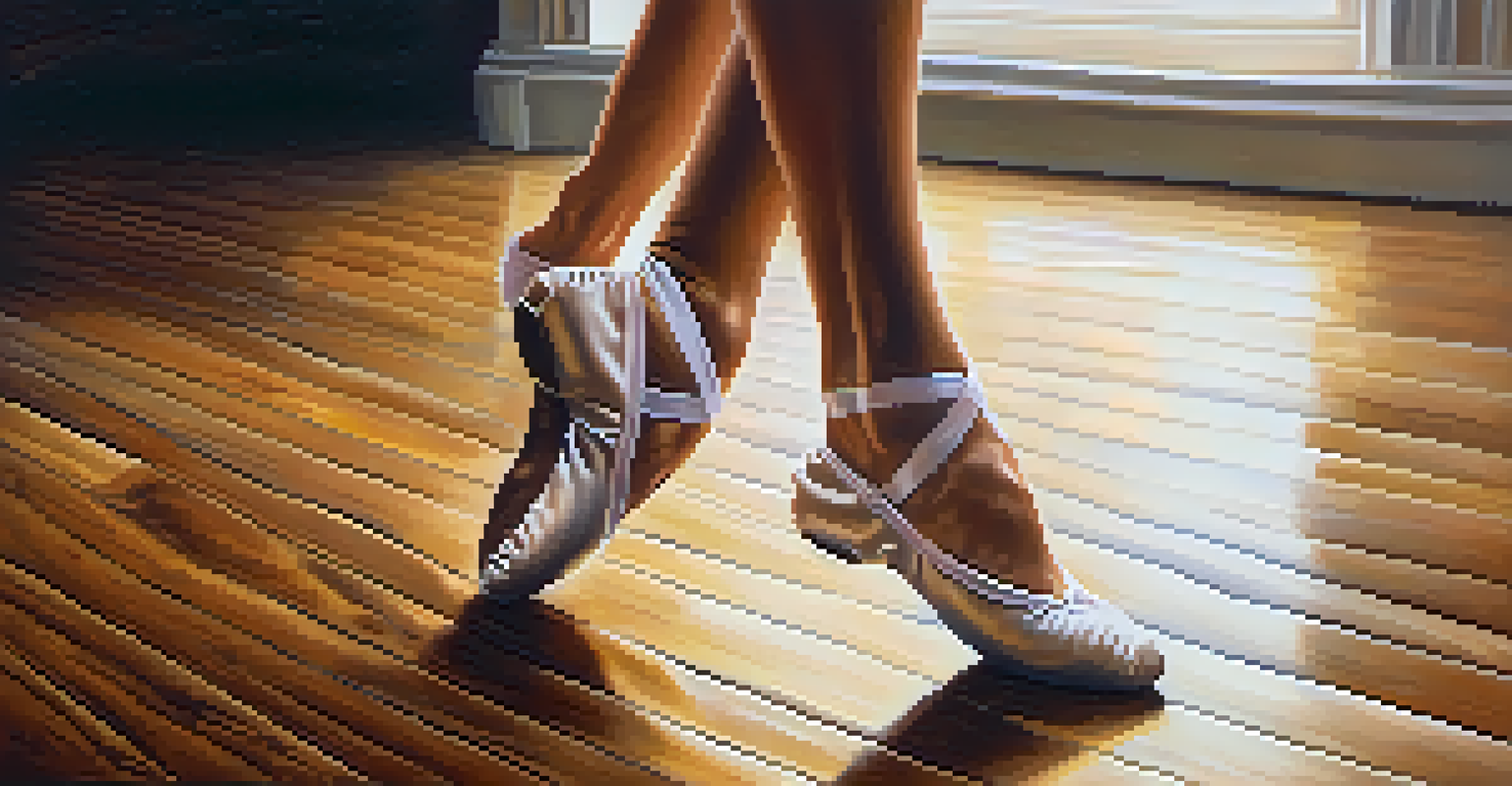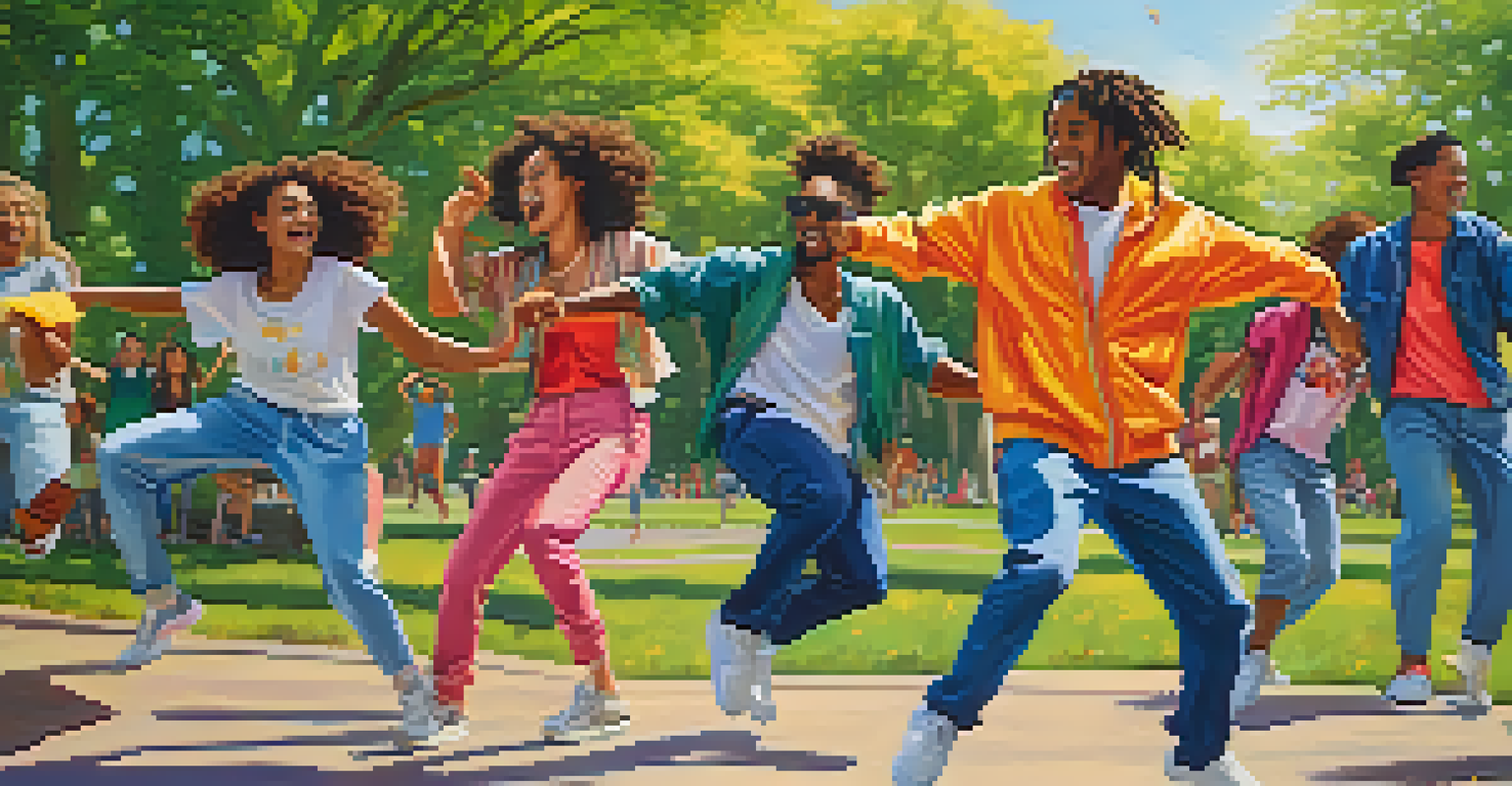The Role of Dance in Enhancing Cognitive Skills in Students

Understanding the Connection Between Dance and Cognition
Dance is often seen as a form of artistic expression, but its benefits extend far beyond the stage. Engaging in dance activates various areas of the brain, fostering connections that enhance cognitive functions. This connection between physical movement and mental agility is increasingly recognized in educational settings.
Dance is the hidden language of the soul.
When students participate in dance, they are not just learning steps; they are also developing skills like memory, focus, and problem-solving. These cognitive skills are essential for academic success and can be strengthened through the rhythmic patterns and sequences involved in dance. The body-mind coordination required in dance helps reinforce these skills.
Moreover, dance encourages creativity, allowing students to think outside the box. This creative thinking translates into better performance in other subjects, showing that the benefits of dance reach far beyond the dance floor.
Dance as a Tool for Memory Enhancement
One of the most significant cognitive benefits of dance is its ability to enhance memory. Learning choreography requires students to memorize sequences and movements, which engages their memory centers. This process can lead to improved recall in other areas of study as well.

For instance, when students learn to dance in groups, they must remember not only their own moves but also those of their peers. This collaborative aspect of dance reinforces not just individual memory but also social learning, where students support each other in remembering steps and sequences.
Dance Boosts Cognitive Skills
Engaging in dance enhances memory, concentration, and problem-solving abilities, contributing to academic success.
Research has shown that those who regularly engage in dance often perform better on memory tests compared to their non-dancing peers. This suggests that the mental exercise involved in dance can boost overall cognitive performance.
Improving Concentration Through Dance Practices
Dance requires a high level of concentration, as participants must focus on their movements and the rhythm of the music. This intense focus can translate into better attention spans in academic settings. When students practice dance, they train their brains to concentrate for extended periods.
To watch us dance is to hear our hearts speak.
For example, during a dance class, students learn to tune out distractions and remain engaged with their instructor and the movements they are practicing. This skill is invaluable when it comes to classroom learning, where maintaining focus can often be a challenge.
Additionally, the practice of dance can help students develop a routine, which further enhances their ability to concentrate. By building a structured approach to learning through dance, students can improve their academic performance.
The Role of Dance in Enhancing Problem-Solving Skills
Dance often involves improvisation and creativity, which can significantly enhance problem-solving skills. When students dance, they frequently need to think on their feet and adapt their movements to fit the music or the group dynamic. This flexibility fosters a mindset that is open to exploring various solutions.
For instance, when faced with a challenging routine, dancers must analyze their movements and make quick decisions to overcome obstacles. This ability to assess situations and make informed choices is a crucial skill that benefits students in their academic work.
Emotional Intelligence Through Dance
Dance fosters emotional awareness and empathy, helping students navigate social situations and build relationships.
Moreover, dance can encourage a collaborative spirit, as students work together to solve choreography challenges. This teamwork not only strengthens problem-solving abilities but also builds essential communication skills.
Dance and Emotional Intelligence Development
Engaging in dance is a powerful way to develop emotional intelligence in students. Through movement, students learn to express their feelings and understand the emotions of others. This emotional awareness is vital for building relationships and navigating social situations.
For example, a dance class often involves interpreting music and expressing it through body movements, which helps students connect with their emotions. This connection fosters empathy and compassion, qualities that can enhance their interactions with peers.
Additionally, dance can serve as a safe outlet for emotions, allowing students to explore and express their feelings creatively. This emotional exploration is vital for mental health and overall well-being.
The Physical Benefits of Dance and Their Cognitive Impact
While the cognitive benefits of dance are impressive, we can't overlook the physical advantages. Regular dance practice improves physical fitness, coordination, and balance, which are essential for overall well-being. This physical activity also contributes to better brain health.
When students engage in dance, they increase blood flow to the brain, promoting the growth of new neurons and improving cognitive functions. This physical exertion helps maintain a healthy body, which is closely linked to a healthy mind.
Physical Fitness Enhances Learning
Regular dance improves physical health, which in turn boosts cognitive functions and academic performance.
Moreover, the endorphins released during dance can enhance mood and reduce stress, creating a positive learning environment. When students feel good physically, they are more likely to perform better academically.
Incorporating Dance into Educational Programs
The growing recognition of dance's cognitive benefits has led to its incorporation into various educational programs. Schools are increasingly offering dance classes as part of their curriculum, understanding that movement can enhance learning outcomes. This integration highlights the importance of a well-rounded education.
By including dance in the academic framework, educators provide students with an opportunity to develop both physically and cognitively. This holistic approach caters to different learning styles, ensuring that all students can benefit from the program.

Furthermore, partnerships with local dance studios can expand resources and provide students with professional instruction. This collaboration can foster a lifelong appreciation for dance and its cognitive advantages.